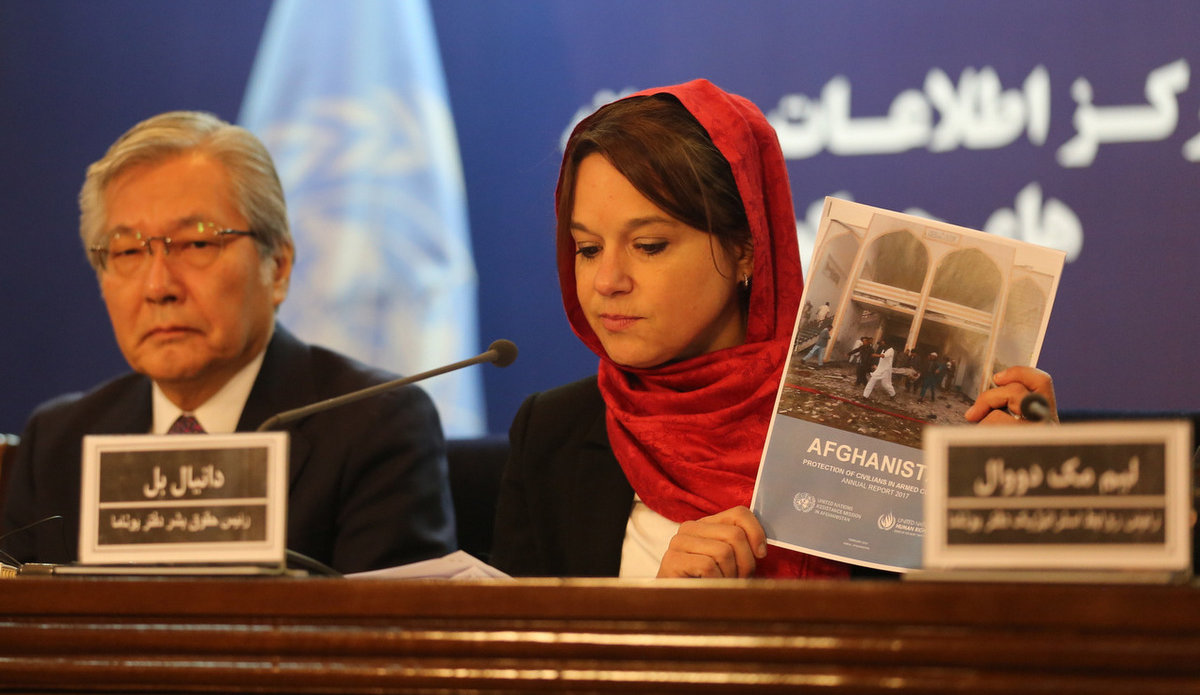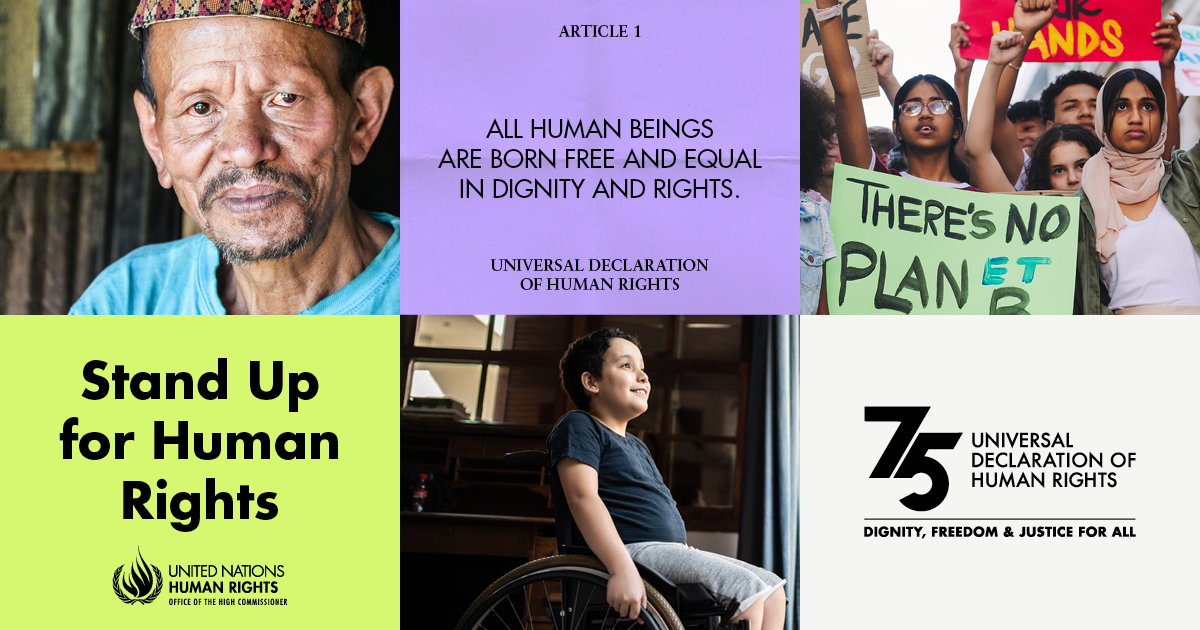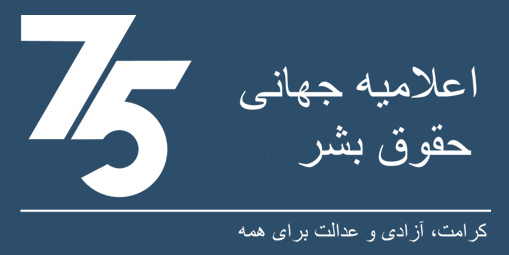Release of 2017 Annual Report on Protection of Civilians in Armed Conflict
KABUL - The following is a near verbatim transcript of a 15 February 2018 press conference on the Release of the 2017 Annual Report on Protection of Civilians in Armed Conflict
Participants:
- UN Secretary-General’s Special Representative for Afghanistan, Tadamichi Yamamoto
- Director of UNAMA Human Rights, Danielle Bell
Tadamichi Yamamoto: Thank you very much. Members of the press and everybody - good morning. I welcome all of you attending this press conference to launch the Protection of Civilians Annual report for 2017.
The key finding in the report is that more than ten thousand civilians – have died or were injured as a result of the conflict in 2017.
The majority of civilians killed are the consequence of attacks by anti-Government elements. This includes not only the Taliban, but also Daesh.
The statistics in this report provide credible data about the war’s impact, but the figures alone cannot capture the appalling human suffering inflicted on the civilian population of Afghanistan.
The findings show that the majority of civilian casualties resulted from suicide attacks, IEDs, ground engagements, targeted killings, explosive remnants of war and the air strikes.
I am particularly concerned by continuation of suicide attacks and the deliberate targeting of civilians; this issue will be addressed by Ms. Bell in more detail.
The terrible pattern of attacks has continued in 2018.
While the report covers 2017, I take this opportunity to again condemn in the strongest terms the Taliban’s attacks in January at the Intercontinental Hotel in PD-2 of Kabul city, and the attack by Daesh against Save the Children in Jalalabad.
We are concerned that we will see greater harm this year unless necessary steps are taken by all parties to prevent civilian casualties.
The United Nations is working to support Afghanistan in many ways: including supporting peace processes, human rights, elections and rule of law. These efforts aim to enhance the lives of Afghans, so that people have hope and may become self-reliant.
When we document these appalling civilian casualty figures, it hurts, because it counters the best interest of this country and undermines efforts serving the people of Afghanistan.
Each of these figures represents a hope crushed for a better future.
When we see civilians being deliberately targeted, you wonder, how long does this have to go on? What were the perpetrators thinking? They’re claiming to represent the interests of Afghans yet their actions are the opposite.
They’re killing their own people in the most appalling manner, creating terror and suffering.
We as the United Nations denounce such attacks and call upon Anti-Government Elements to stop targeting civilians and cease indiscriminate attacks, particularly in civilian populated areas. Anti-Government Elements must respect the definition of what a ‘civilian’ means in accordance with international humanitarian law.
I also stress that medical facilities, schools and other civilian facilities may not be used for military purposes.
The United Nations acknowledges that efforts have been made, particularly by the Government, but the overall numbers are totally unacceptable and more must be done.
We will continue to work with the Government, Taliban and International military forces and we recognize their efforts to reduce harm but we expect greater efforts to bring the numbers down further.
We have to work for a peace agreement to end the conflict. Collective efforts must be redoubled to bring this conflict to an end.
But in the absence of such a peace agreement, we call on those parties making the decisions to use weapons that kill and maim civilians to commit to making changes that will have a much stronger impact on civilian protection.
I now request Ms. Danielle Bell to brief on the core findings of the report but I’d like to first add that the High Commissioner for Human Rights in Geneva and myself have both endorsed this report.
I can assure you that the information you find in this report is reliable and accurate.
Danielle Bell: Thank you SRSG for your strong words and thank you to all of you for being here.
In 2017, UNAMA documented 10,453 civilian casualties, a nine per cent decrease from 2016.
This reduction is an important step, but I must emphasize that 2017 was the fourth consecutive year where the Mission recorded more than 10,000 civilian casualties.
Suicide attacks together with improvised explosive devices or IEDs caused 40 per cent of civilian casualties, followed by ground engagements which caused 33 per cent, and then targeted killings, explosive remnants of war and air strikes.
The report attributes two thirds of responsibility for civilian casualties to Anti-Government Elements, mainly Taliban and Daesh.
Pro-Government Forces, which include Afghan national security forces, international military forces and pro-government armed groups, were responsible for 20 per cent of civilian casualties. And the remaining casualties were caused mainly by unattributed cross fire and unattributed explosive remnants of war.
A key finding of the report is that civilian casualties attributed to Pro-Government Forces decreased by 23 per cent, this decrease is mainly linked to efforts by Afghan national security forces to reduce harm during ground engagements.
Civilian casualties caused by Anti-Government Elements decreased by three per cent, mainly due to a 12 per cent reduction in civilian casualties caused by Taliban.
However this overall decrease was offset by two factors - civilian casualties attributed to Daesh, who caused 1,000 civilian casualties or 10 per cent of all casualties, as well as the attack on 31 May in Kabul, which caused almost 600 casualties.
The report records the highest number of civilian casualties by far in Kabul province, mainly Kabul city, followed by Helmand, Nangarhar, Kandahar and Faryab provinces.
As the SRSG mentioned, suicide and complex attacks killed the most civilians, killing and injuring over 2,300 civilians, a 17 per cent increase from last year and the highest numbers recorded by the Mission since 2009.
The majority of these casualties occurred in Kabul city.
Disturbingly, the Mission recorded almost 500 casualties from suicide attacks against places of worship, mainly targeting people praying in mosques.
Daesh claimed responsibility for the majority of these appalling incidents.
Contrary to the overall decrease, women casualties remained the same as last year, however, women casualties from suicide and complex attacks doubled.
Child casualties decreased by 10 per cent, although we documented almost 3,200 child casualties, mainly from ground engagements, explosive remnants of war and pressure-plate IEDs.
The report also raises concern about two issues impacting boys in particular: child recruitment and conflict-related sexual violence. In this regard, the report welcomes the criminalization of bacha bazi in the revised Penal Code, as well as the provisions aimed at preventing child recruitment and use.
Explosive remnants of war caused 639 casualties, mainly children.
This is shameful - casualties from unexploded ordnance are preventable.
In this regard, the report welcomes the Government’s ratification of Protocol V to the Convention on Certain Conventional Weapons, which obligates parties to clear unexploded ordnance from the battlefield, and the report urges swift implementation.
In many areas the report commends actions taken by the Government to protect communities but the report also raises concern about aerial operations by Afghan and international forces.
In 2017, UNAMA documented 631 civilian casualties from air strikes, a seven per cent increase from last year, and a highest number recorded by UNAMA.
In conclusion I’d like to point out that this report documents over 4,300 incidents of conflict related violence, indexed by multiple categories. But the purpose of the reports is not to place blame but these numbers and figures enable the Mission to conduct targeted advocacy with parties to the conflict because they have the power to prevent civilian casualties.
In conclusion, the report provides recommendations to all parties to the conflict, in line with international humanitarian law to prevent harm, respect civilian status and ensure accountability.
The report is available on UNAMA website and I urge all of you to read it.
Thank you.
![]() View a pdf of the press conference transcript
View a pdf of the press conference transcript
 UN
UN







